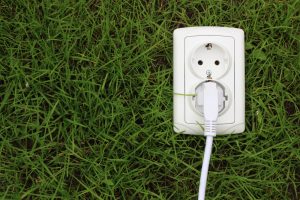
To reduce its energy bill, the company must control its energy consumption at each consumption station such as: lighting, heating, air conditioning, etc.
Natural resources are running out and pollution is becoming a part of everyday life. It is therefore important to save energy for our environment and our wallet.
Energy savings have also become political and economic issues.
There are several ways to save energy: perform an energy performance diagnostic, review building design, save on lighting, heating and cooling.
The purpose of the energy performance diagnostic in companies is to identify potential sources of energy savings.
After a thorough study, it will be necessary to determine the effective and profitable actions to undertake as well as the investments necessary to achieve them.
 Saving energy in the field of VSEs and SMEs is a subject that is being taken more and more seriously. The solutions to achieve these savings have been made easier for several years, including the implementation of measures such as energy saving certificates or the professionalization of energy diagnostics. At the same time, tools are directly available to entrepreneurs to act at their level, either by estimating the energy performance of their SME / SME, or by implementing actions to limit their energy consumption.
Saving energy in the field of VSEs and SMEs is a subject that is being taken more and more seriously. The solutions to achieve these savings have been made easier for several years, including the implementation of measures such as energy saving certificates or the professionalization of energy diagnostics. At the same time, tools are directly available to entrepreneurs to act at their level, either by estimating the energy performance of their SME / SME, or by implementing actions to limit their energy consumption.
Energy optimization is first and foremost a good diagnosis. The energy diagnosis allows VSEs / SMEs to evaluate the energy savings achievable through the analysis of existing installations.
A detailed analysis of energy consumption
Prior to the diagnosis, the pre-diagnosis aims at carrying out an energy balance of the company in order to determine the more specific diagnoses to be made. Savings deposits are identified and energy performance is compared with previously established scales. Depending on the situation, the company will have to make simple improvements or deeper studies for more serious modifications. The pre-diagnosis therefore follows directly from a more in-depth analysis. The energy balances of the sectors and materials studied are carried out in order to draw up a precise plan of the measures to be put in place. The cost of improvements is estimated and the diagnosis takes stock of the most suitable solutions for your SME. Depending on the proposed solutions, the company can achieve between 15 and 20% savings on its energy bill.
 What is an energy diagnosis ?
What is an energy diagnosis ?
During an energy diagnosis, the various energy consumption stations are analyzed in order to identify possible sources of savings. The role of the diagnosis is also to determine the actions to be implemented and the investments needed to achieve them. The goal is to find the most effective and least expensive solutions for businesses. The scope of the diagnosis is broad since it concerns both the production equipment, but also utilities such as ventilation, transport, lighting, air conditioning or heating.
There are different types of ecological construction or rehabilitation work for a building and promoting energy saving. These are generally used in low energy buildings. They are distinguished in two types: the work to save energy, and work using renewable energy.
Insulation work
The majority of heat losses in a home are the result of poor quality insulation. On average, 70% of the energy used in a home is used for heating. It is therefore more than important to have quality insulation.
Insulation of the roof
The roof of a building is at the origin of the most important heat losses, they amount on average to 30%. Like the insulation of the walls, the insulation of the roof can be envisaged by the interior notably by the insulation of the roof spaces. In the case where the attic is congested, insulation from the outside is recommended.
Wall insulation
Walls are one of the main causes of heat loss in a building. For example, it is estimated that 25% of heat loss is caused by poor wall insulation. Two types of wall insulation are practiced: insulation from the inside and from the outside. Inner insulation is an insulation technique used to insulate a building inside the building itself, while the insulation from the outside consists of protecting the building’s facades. In both cases, the insulation requires the use of highly insulating materials such as wood fiber, hemp wool, cellulose wadding …
Floor insulation
Although 7% of a building’s heat loss is through the floor, the insulation of the building must be taken into consideration. Depending on how a building is arranged, several types of floor insulation are achievable. However, care must be taken that the rooms below this floor remain frost-free, otherwise a heating system must be installed.
